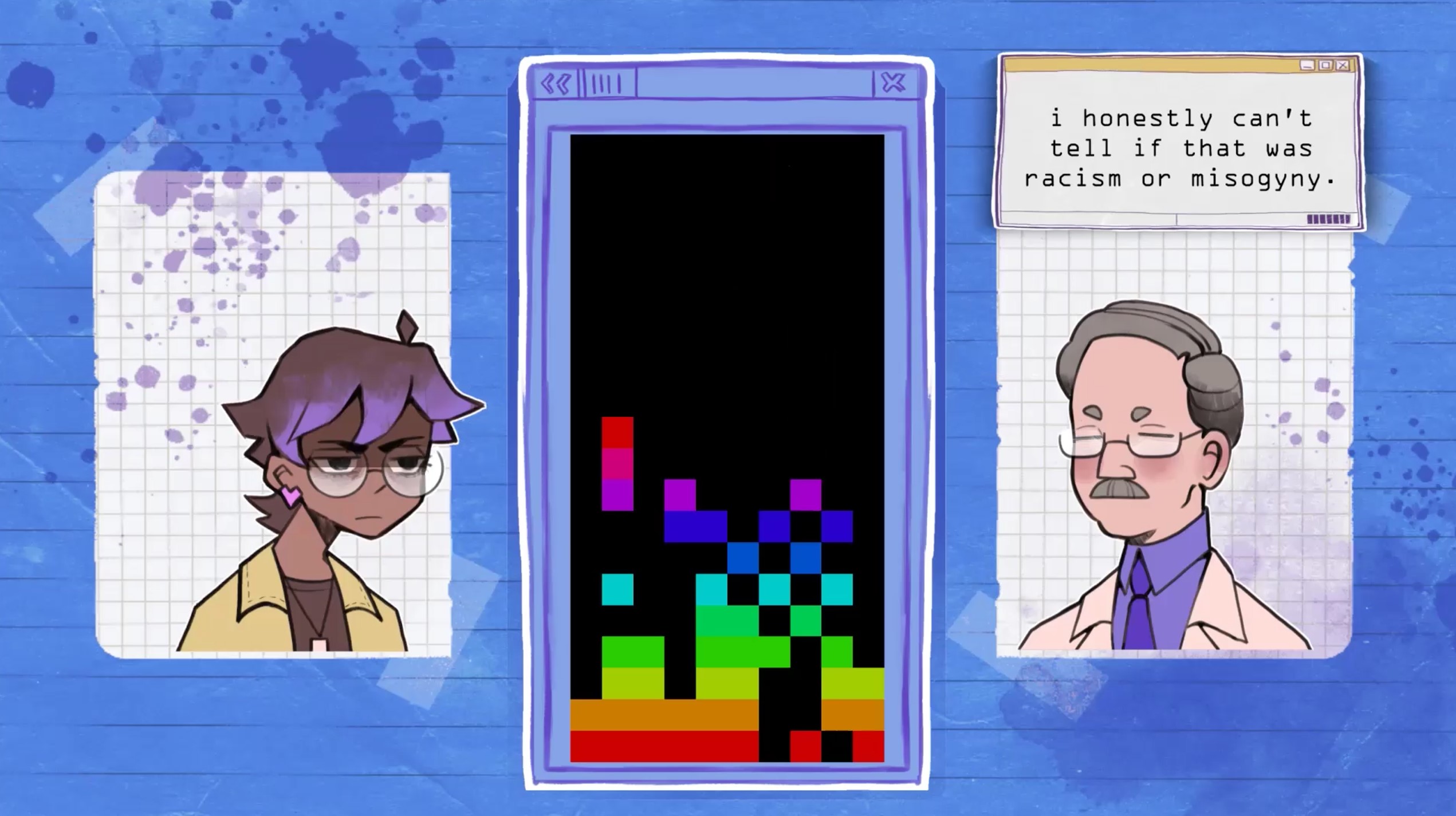
(val)iant: or, val’s guide to having a broken vag
Kaitlin Bonfiglio (“KB”), Creative Director
Sloan Grant(s) Received: 2022, USC, Game Development Grant
Project Type: Videogame
Genre: Casual, Indie, Simulation
Length: 30 minutes
Field of Science: Narrative Medicine / Vulvovaginal & Reproductive Health / Public Health & Education
Stage: Sales and Distribution
Synopsis:
In my thesis game (val)iant: or, val’s guide to having a broken vag, the player inhabits the world of protagonist Val, a nonbinary college student struggling with vulvovaginal chronic pain (specifically, vaginismus). Their story centers and uplifts trans experiences in reproductive health, as often in medicine anything that has to do with vaginas is relegated to “women’s health”. This game is for anyone who has been discriminated against or marginalized by the American public health system, centering people with vaginas: cis women, trans men, nonbinary folks, and more.
To that end, the primary target audience for (val)iant is anyone, age 15 and above, with a vagina. I have had players with vulvodynia and vaginismus play my game and say that it was the first time they had ever seen representation of these experiences in a videogame. I have had players disclose to me that they “didn’t realize that the pain they were dealing with in private had a name”. I’ve had players, who presumably do not experience this kind of chronic pain, tell me that “the story [of (val)iant] takes [them] to a deeply emotional place of learning”. Of course, the secondary target audience of the game is that group of people, who are unfamiliar with vulvovaginal pain conditions.
As Val narrates their story, players will experience a variety of mini-games and mechanics that explore Val’s relationship to their own body, to sex, and to relationships. These mechanics are sometimes frustrating — asking the player to reflect critically on why it is so hard to succeed. For example, in one scene, players must drag and drop a tampon “into place”, which proves to be impossible (and perhaps an exercise in reflective game design). But as Val learns, grows, and meets new people, these mechanics and minigames will change and evolve.
In making this game, I hoped to represent a group of people that is much larger than we think — the tens of millions of people who struggle with a “private type of pain”. I hope that players can see how queer folks navigate a transphobic, racist, and sexist society, in an effort to get quality healthcare and science-based sex education. And finally, I hope that engagement with the narrative can lead to critical reflection: on our personal lives, on our relationships, and on the society that taught us (or didn’t) what sex is and how it works.
The impetus for making this game through a desire to fundamentally change in the way we teach sex education. How do we learn about sex — our “roles”, pleasure, and safety? How do we unlearn harmful notions of who feels pleasure and who feels pain? How are these chronic pain conditions seen by medical professionals, and how are they treated, if treated at all?
My goal is to shed light on the trials and tribulations of people with vaginas as they navigate a healthcare system that is racist, transphobic, and sexist. My belief is that games and interactive media — experiences of discomfort, joy, pleasure — will help us along in that journey toward fundamental change.
